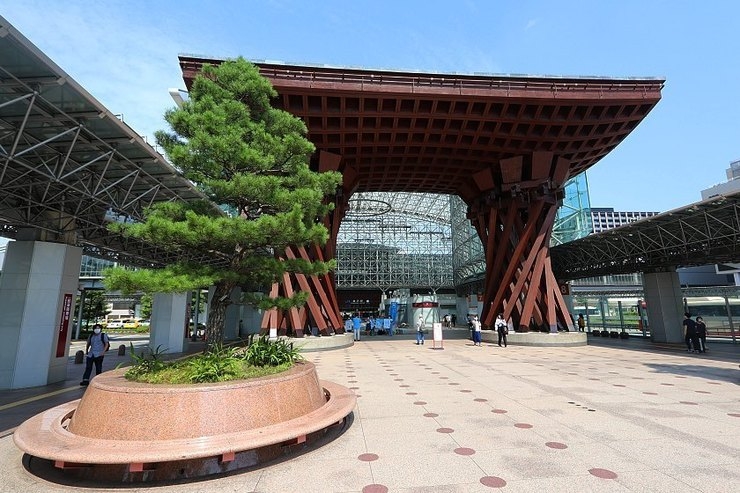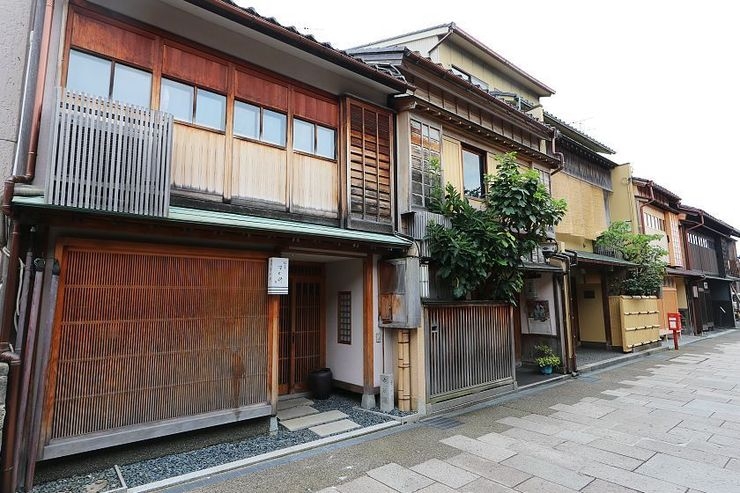Omicho Market
My first stop for the day was the Omicho Fish Market, which managed to maintain at least a sense of its usual bustle even with a fraction of the usual customers. Vendors, restaurant staff and customers alike were all wearing masks, and hand sanitizers could be found throughout the market.
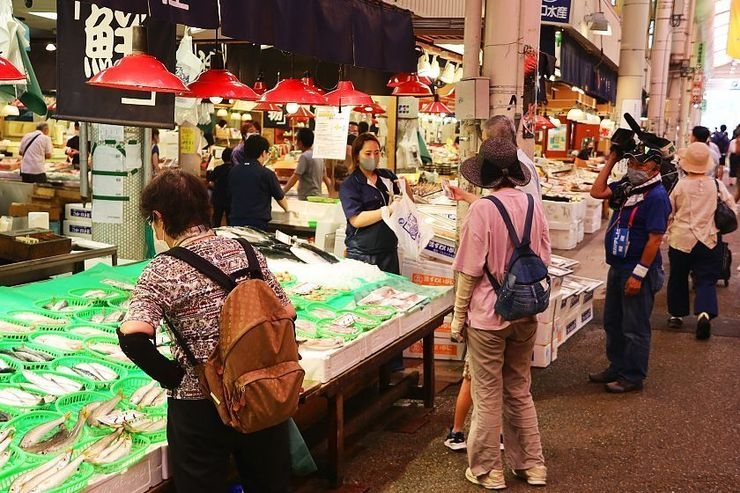
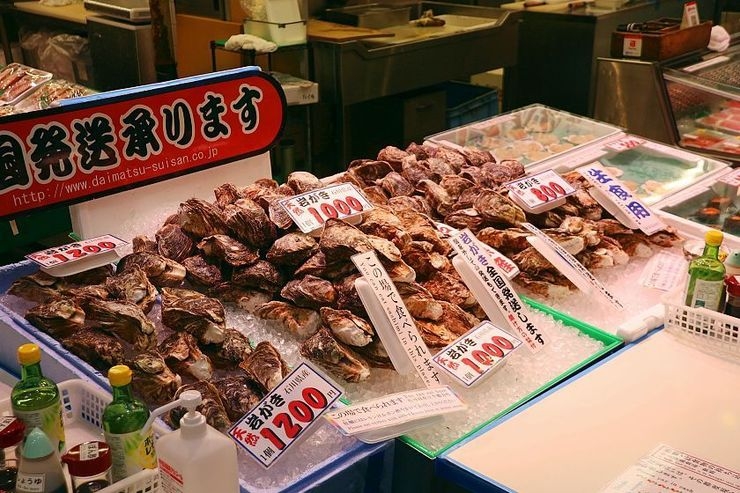
Fresh oysters on display
Oyama Shrine
The next location on my list was the Oyama Shrine, located in a leafy, secluded precinct in the heart of the city known for its unusual gate building and small strolling garden. The shrine was perhaps a little quieter than usual, but at least a handful of other visitors came and went as I took a look around.
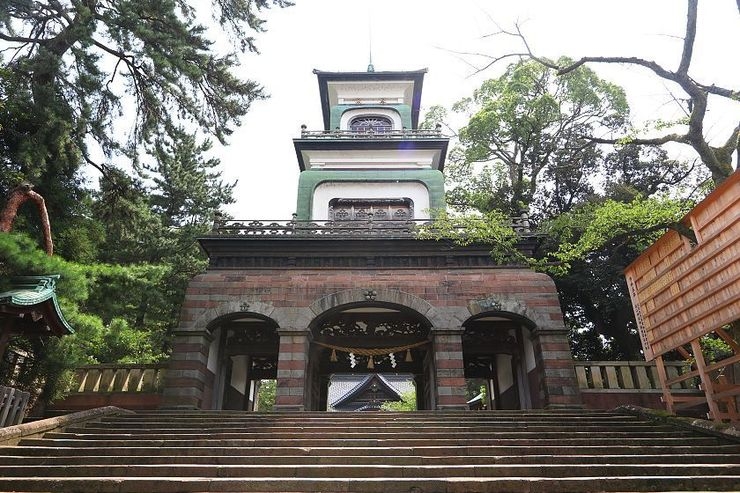
The Oyama Shrine's distinctive gate combines Japanese, Chinese and Dutch architectural features
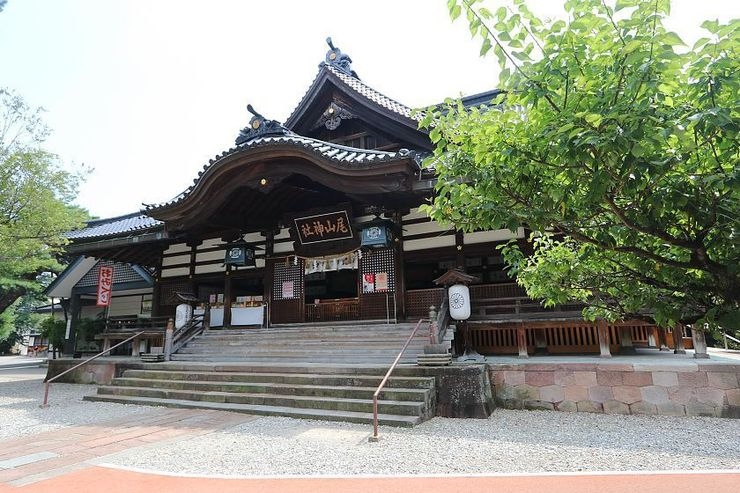
View of the main building
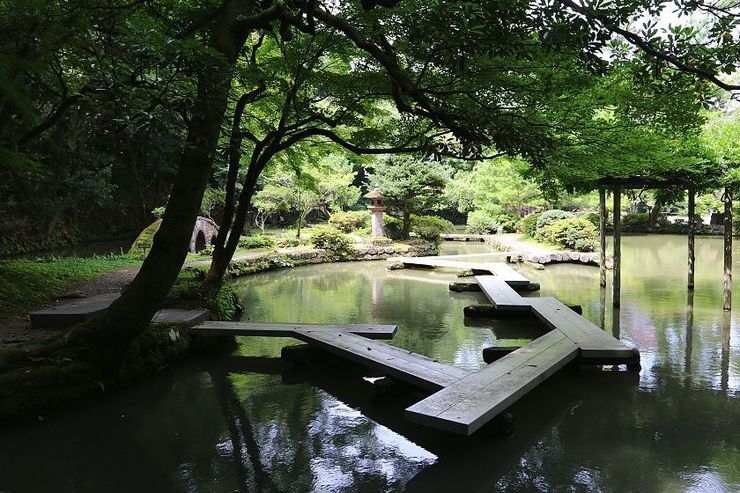
The shrine's strolling garden
Kanazawa Castle
From the back of the shrine's sacred precinct, a new wooden bridge led me across the road to Gyokuseninmaru, a small but beautifully formed landscape garden within the grounds of Kanazawa Castle. The bridge allows visitors to enter the garden through an impressive new reconstruction of the Nezumita-mon Gate, built entirely from wood using traditional techniques and completed in July of this year.
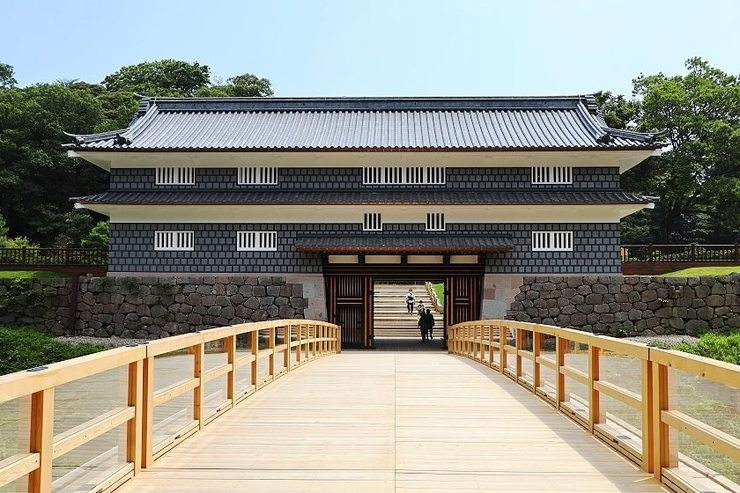
The reconstructed Nezumita-mon Gate

Entry to the gate building's interior, requiring a temperature scan and face mask, revealed a beautiful structure of interconnecting beams, still with a strong perfume of new timber.
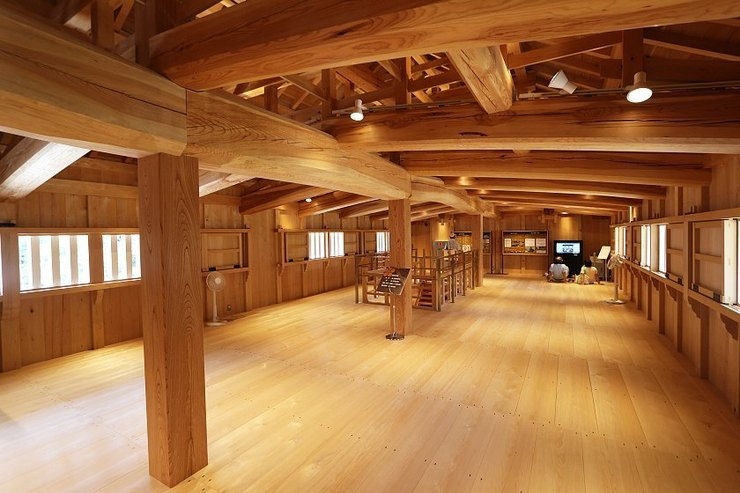
Interior of the Nezumita-mon Gate
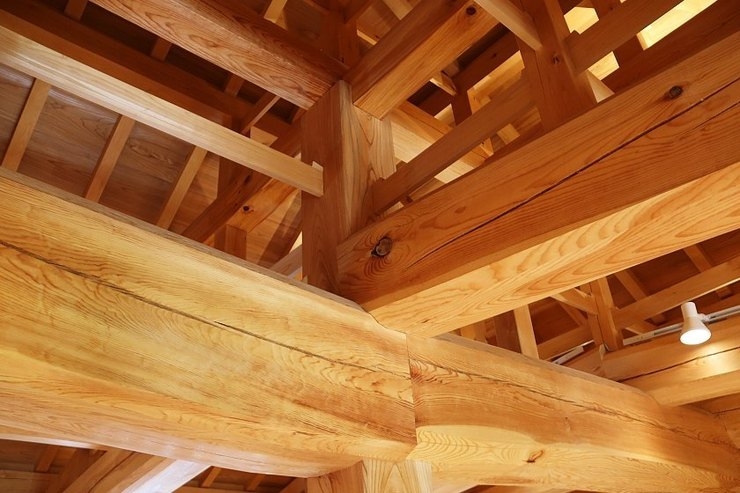
Elaborate beams support the roof
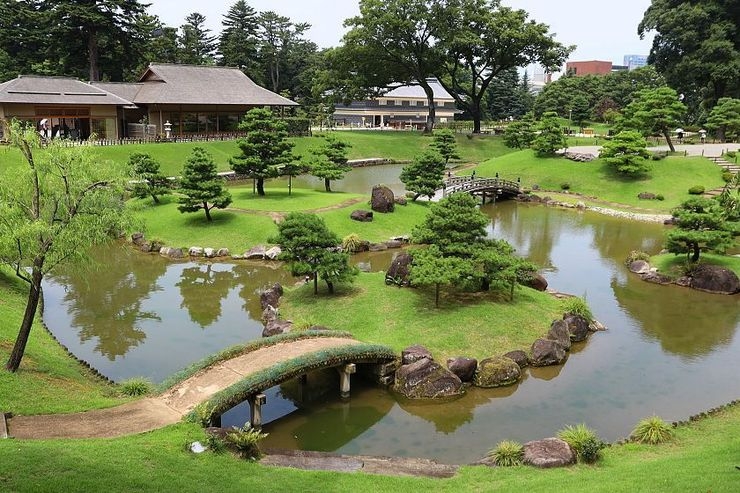
View of Gyokuseninmaru Garden
The garden itself was very quiet, apart from a trickle of visitors making their way down from the inner circle of Kanazawa Castle.
From Gyokuseninmaru I threaded my way through the castle grounds, admiring the reconstructed watchtowers, gates and turrets. To escape the heat, I paused at the Tsurunomaru Rest House, an attractive space with interactive exhibits about the castle and a cafe, where I enjoyed an ice-cream and the panoramic view of an inner courtyard, which I had almost to myself. Altogether, I encountered a few dozen other visitors at the castle, but with that number spread across the extensive grounds it still seemed very quiet.

View of the Tsuzuki Yagura (watchtower)
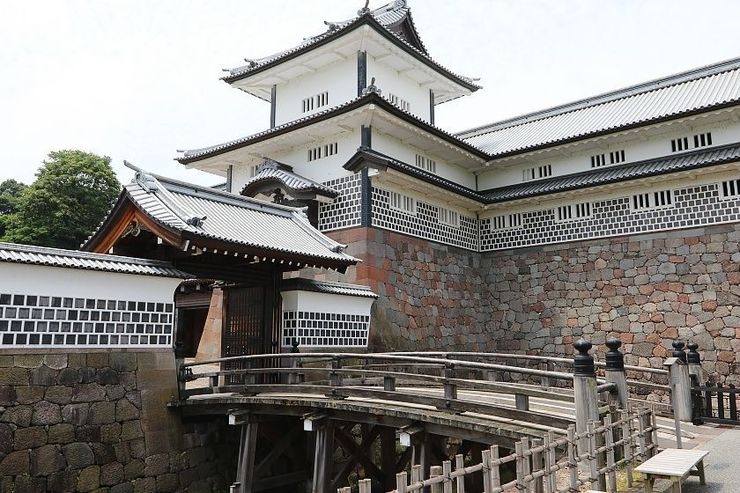
The Hashizume-mon gate
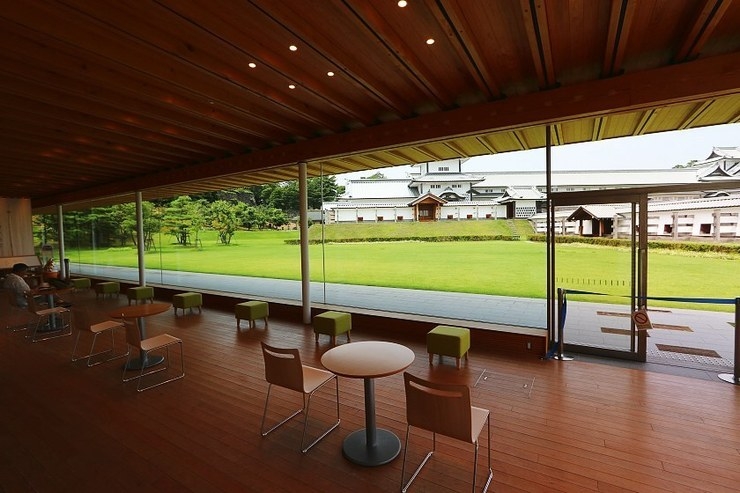
View from the Tsurunomaru Rest House
Kenrokuen Garden
Leaving the castle through the main Ishikawa-mon Gate, I made my way across a bridge and into Kenrokuen, one of Japan's finest landscape gardens and perhaps the best known of Kanazawa's sightseeing spots. As a wide and open space, I didn't see any signs requesting masks to be worn inside the garden, but hand sanitizer was available to use at the entrance gate and various rest-stops. This was the busiest location of the day, and it was especially nice to see a lot of young couples out and about wearing attractive summer yukata.
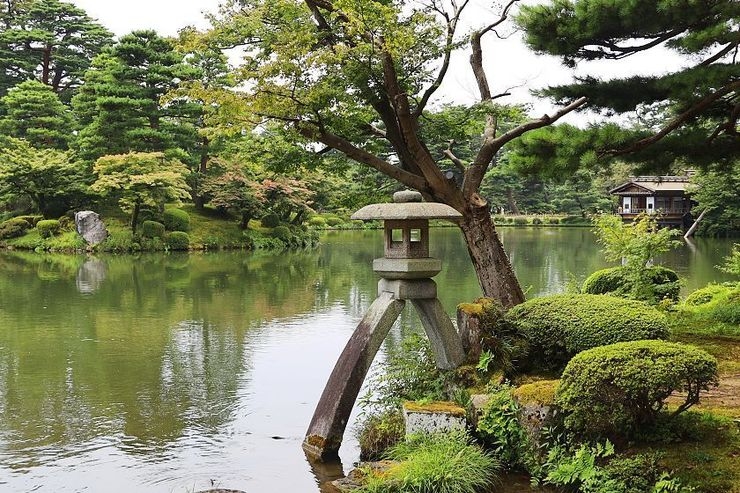
The famous Kotojitoro Lantern is a popular symbol of Kanazawa
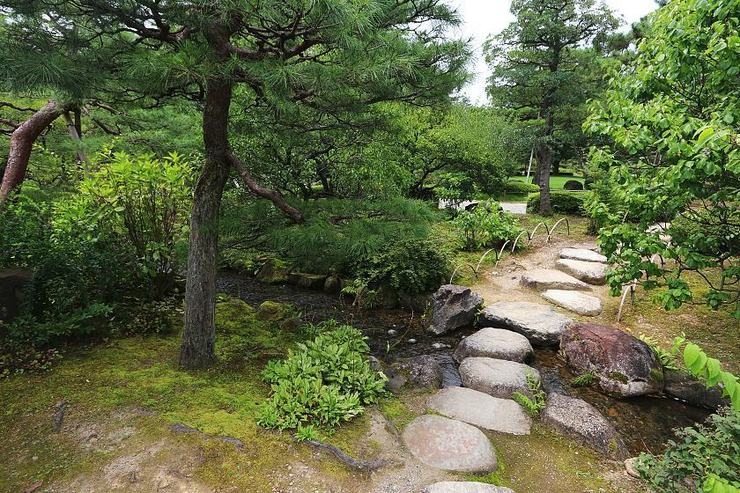
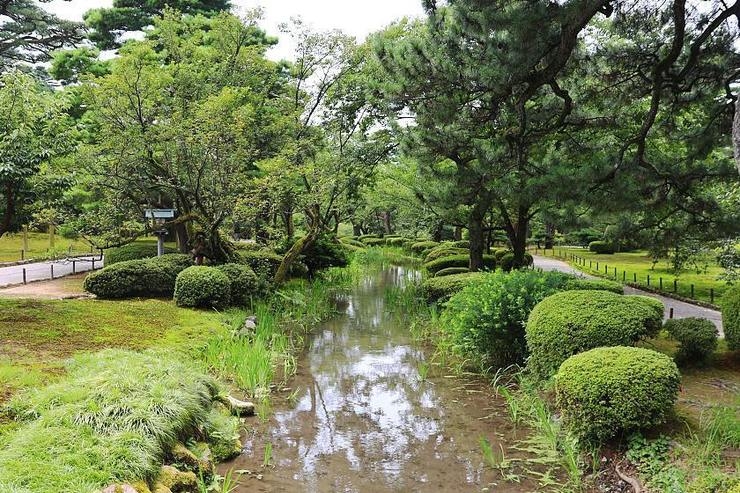
Higashi Chaya District
After exloring Kenrokuen I made my way to the Higashi Chaya District, one of the city's historic entertainment districts and still known as a center for geisha performances. Wandering along its narrow streets lined with beautiful wooden machiya houses in the Edo Period style, I saw only a few other visitors and many of the area's smaller shops and cafes were shuttered.
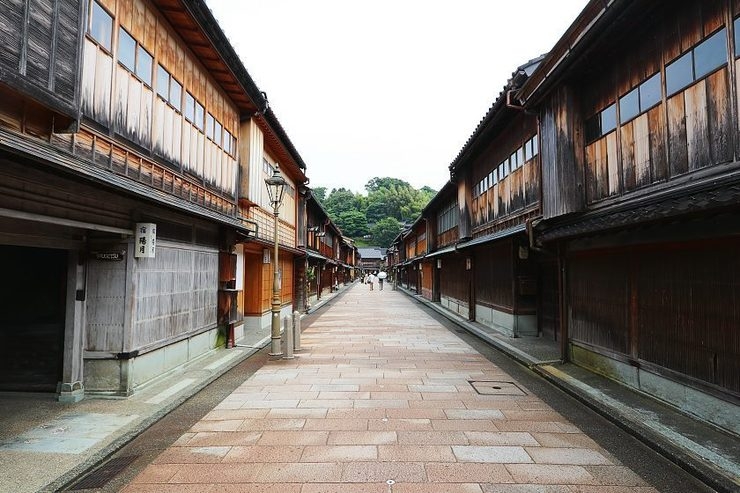
Edo-style machiya houses in the Higashi Chaya area
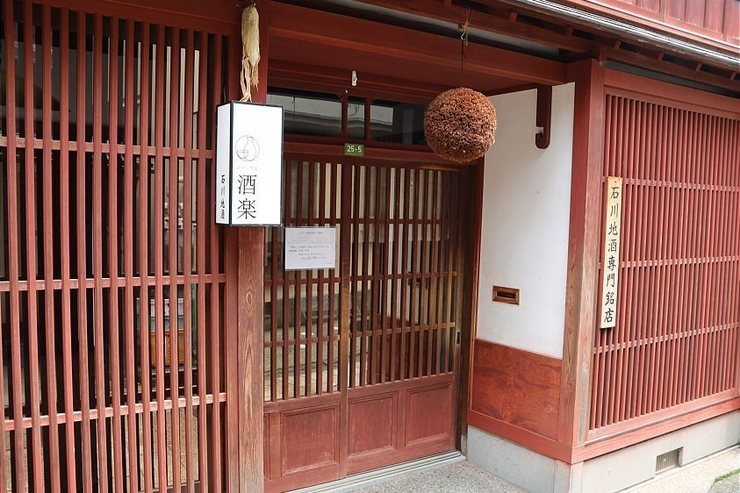
Many of Higashi Chaya's smaller teahouses remain closed
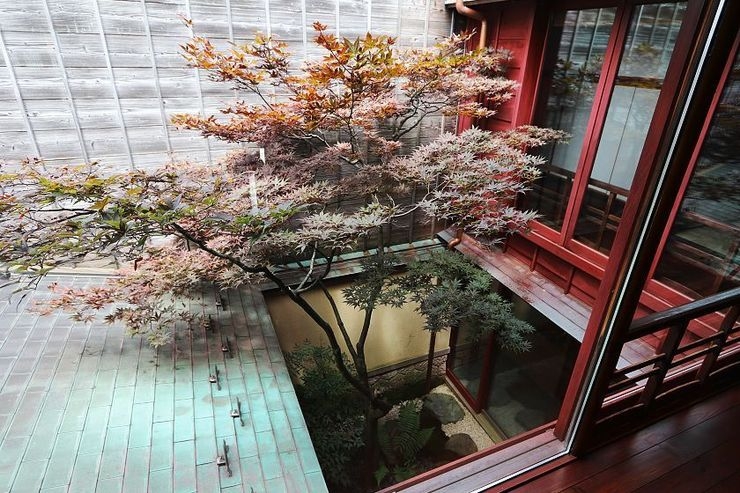
Attractive tsubo-niwa (enclosed garden) in one of Higashi Chaya's gallery spaces
Nishi Chayagai
From there I crossed over to the opposite side of the city center to check out the Nishi Chaya District, another well-known geisha area. Much smaller than its east-side counterpart, the Nishi Chaya District is confined to a single street with rows of the same elegant, wood-latticed buildings on either side. Here I saw just a handful of other visitors taking pictures, and all but two of the street's teahouses were closed for the time being.
21st Century Museum of Contemporary Art
The final stop on my itinerary was the 21st Century Museum of Contemporary Art, a very attractive circular structure of glass, steel and white concrete set in a grassy area dotted with pieces of interactive sculpture. After Kenrokuen, this was the second busiest attraction I visited in the city, with fairly large groups of visitors enjoying the gallery and its surrounding space. Entry requirements were quite strict, with all visitors temperature scanned, given hand sanitizer and asked to wear masks at all times inside the building.
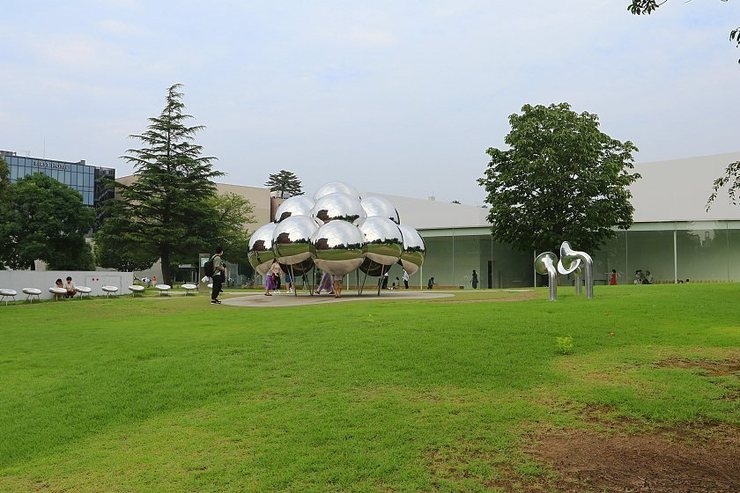
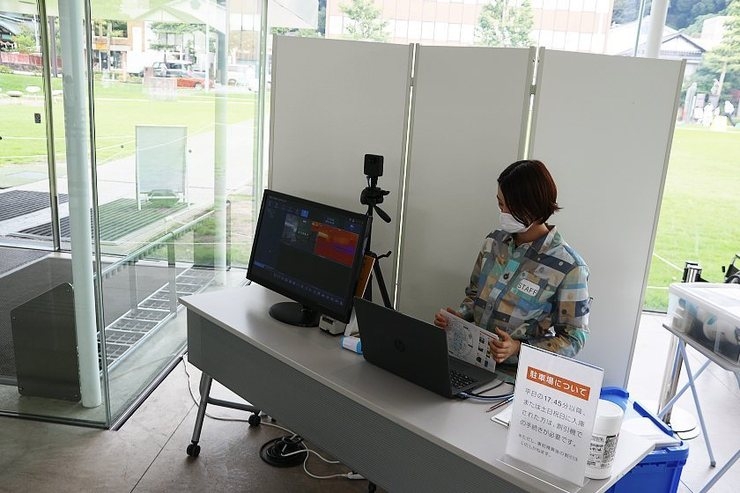
Visitors to the museum are greeted by a sophisticated-looking screening device
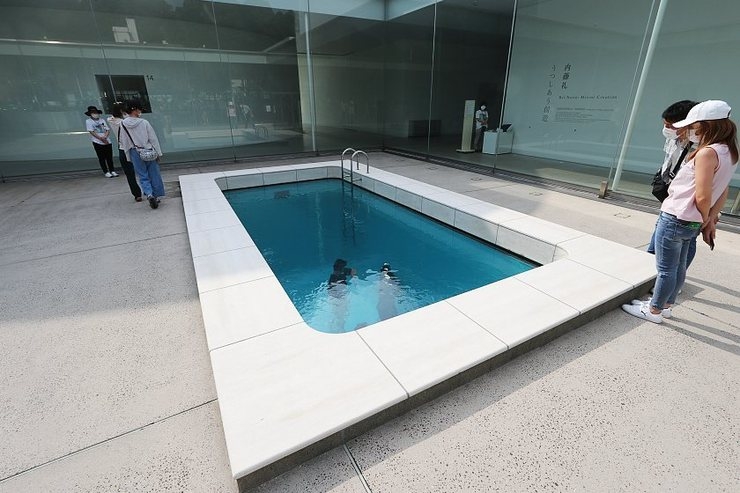
Swimming Pool, a well-known interactive work by Leandro Erlich
